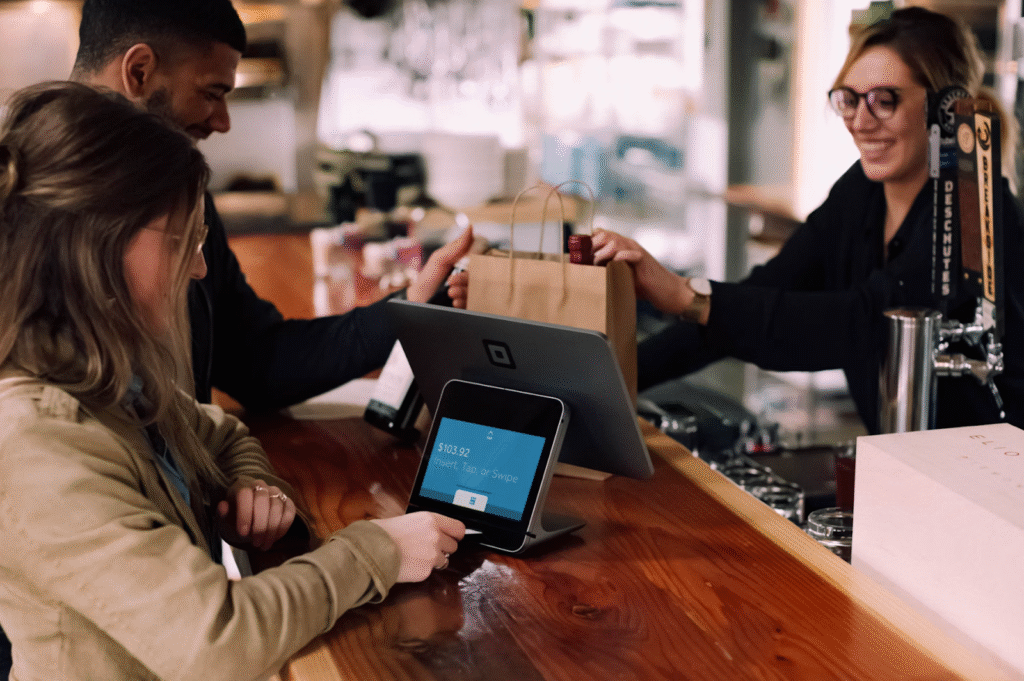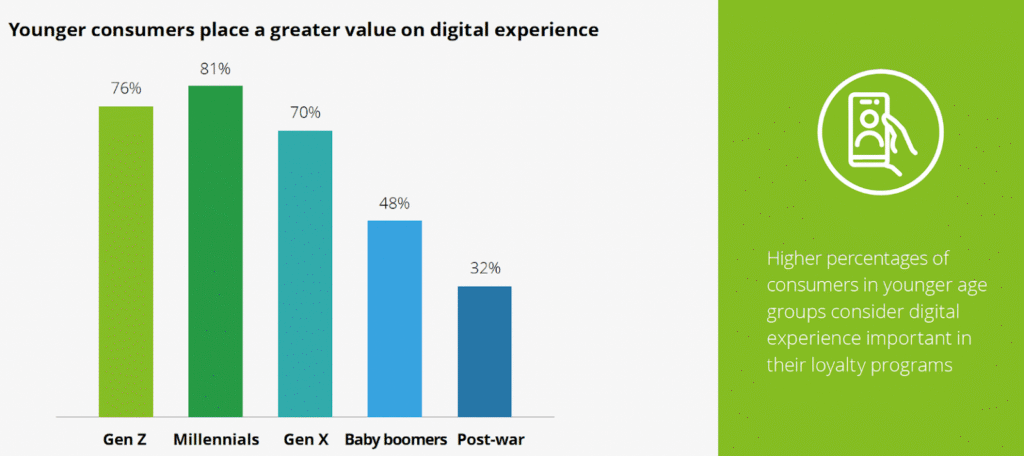Estimated Reading Time: 6 minutes

Believe it or not, your competitors aren’t stealing your customers with better food.
They’re stealing them with smarter loyalty programs.
Every time a customer forgets about your outdated punch card or never gets that “points reminder” email, you’re basically paying for your competitor’s marketing.
Loyalty has gone fully omnichannel and if your restaurant or retail business is still relying on a dusty punch card, you’re basically asking customers to time travel back to 2002.
Omnichannel loyalty programs don’t just keep customers coming back. It weaves your brand into their daily lives across apps, emails, texts, social media, and even in-store.
And the payoff?
Massive.
Industry research consistently shows that omnichannel strategies boost customer lifetime value (CLV) and revenue—typically delivering double-digit uplifts compared with single-channel approaches. Meanwhile, Salesforce backs this up with another eye-opener and found that 78% of consumers expect consistent interactions across all touchpoints.
Translation: Customers don’t care if they’re on Instagram, your website, or sitting at table 5. They want the same seamless loyalty experience everywhere.
So, let’s talk about what the future looks like (and how you can get ahead before your competitors do).
Why Omnichannel Loyalty is the New Standard in 2025
We live in an age where attention spans are shorter than a YouTube Short. If your loyalty program isn’t everywhere your customer is, it might as well not exist.
Here’s why omnichannel is no longer optional:
- Customer expectations are sky-high
Accenture found that 91% of consumers are more likely to shop with brands that recognize them and provide relevant offers. Shoppers expect brands to “know them” across channels.
- Mobile-first world
Younger customers don’t just prefer digital, they expect it. Deloitte found that 81% of Millennials and 76% of Gen Z place a high value on digital experiences in loyalty programs. A plastic card just can’t compete with a push notification.

Think about it. When was the last time someone bragged about their punch card?
- Data synergy
Linking in-store and digital gives you a 360° view of each customer. That data fuels personalization and smarter campaigns.
In short, if your loyalty program only works when someone pulls out a plastic card, you’re playing checkers in a world of 3D chess.
Want to see how a digital loyalty card works? It only takes less than 10 minutes to set up with SimpleLoyalty.
Strategies That Will Define Omnichannel Loyalty in 2025
So, how do you move beyond outdated loyalty models and future-proof your omnichannel loyalty program?
Here are the strategies leading businesses are already putting into action:
- AI-Powered Personalization
Netflix knows what you want to watch even before you do. Your loyalty program should be able to do the same and know what reward makes a customer come back.
AI can analyze purchase history and predict offers that actually convert. So, instead of blasting every customer with the same boring “5% off”, AI can send:
- “Free dessert for your 3PM coffee run”—precisely when they’re most likely to act.
- “Extra points if you order your usual Friday-night takeout”.
Why it matters: relevance drives action. And with a platform like SimpleLoyalty, AI-driven triggers are built-in automations. No need to sweat the small stuff!
- Gamification
Punch cards are dead. Gamified loyalty is thriving.
Think achievement badges, challenges, or streaks. According to Snipp, gamified loyalty increases engagement rates by up to 60% compared to traditional models. The psychology is simple: people love progress, achievements, and rewards that feel fun.
For example:
- A “Matcha Master” badge after 10 visits.
- A streak reward for coming 5 days in a row.
- A surprise spin-the-wheel prize on birthdays.
- Unified Wallets & Digital IDs
No more “Wait, do I have your app?”
Customers can earn and redeem seamlessly with digital wallets, QR codes, or even NFC (near-field communication) payments.
This removes friction—the biggest killer of loyalty program adoption.
- Cross-Channel Rewards
Customers want flexibility:
- Buy online, redeem in-store.
- Earn in-store, unlock perks on the app.
- Share referral links via SMS and get instant credits.
Most members want to engage with loyalty programs through multiple channels. Flexibility = stickiness = loyalty .
- Community-Driven Loyalty
Starbucks set the standard with its rewards community and even crowdsourced drink flavors. Community-driven programs deepen emotional ties by letting customers co-create perks, vote on new features, or share rewards with friends.
This isn’t just points.
It’s belonging.
And when customers feel they belong, they buy more—and stay longer.
Trends Shaping Loyalty Beyond 2025
Let’s look at where omnichannel loyalty is headed next (spoiler: it’s not just “more points”):
- Hyper-Personalization
Think “creepy accurate”. Expect loyalty programs to recommend offers with eerie precision: “Yes, we know you always order iced americanos at 3PM”.
- Sustainability Rewards
78% of Gen Z say they prefer brands with eco-friendly loyalty perks (NielsenIQ). Expect more discounts for bringing reusable cups or perks tied to carbon offsets.
- Integration with Wearables
Imagine loyalty alerts popping up on your smartwatch when you pass by a store. That’s coming faster than most businesses think.
- Zero-Party Data Collection
With cookies phasing out, customers will willingly share their preferences (favorite drinks, dietary choices, or preferred shopping days) in exchange for better perks. Loyalty becomes a value exchange, not just a desperate discount scheme.
Measure ROI: Does Omnichannel Really Pay Off?
Yes, if you track the right stuff. A loyalty program without measurement is just an expense line.
Key ROI (Return on Investment) indicators to track:
- Customer Lifetime Value (CLV): Omnichannel members spend more and return more often. A Harvard Business Review study of 46,000 customers found they spent up to 10% more online, 4% more in-store, and made 23% more repeat shopping trips compared to single-channel shoppers.
- Engagement rate across channels: It’s not enough to have SMS, email, and an app if members only use one of them. Tracking cross-channel engagement shows whether your loyalty program is truly integrated into their daily habits…or if it’s just gathering dust in their inbox.
- Redemption frequency: A reward that’s never redeemed isn’t a reward at all. Monitoring how often members claim and use their rewards tells you whether your program is motivating action, or if your offers need to be rethought.
- Churn reduction: When rewards, reminders, and experiences are available across every touchpoint, members feel consistently valued. That steady engagement reduces the chances they’ll switch to a competitor.
The good news? With modern loyalty platforms, this is also automated if you sign up with SimpleLoyalty.
Conclusion
The loyalty program of the future is a connected ecosystem. Customers now expect brands to meet them wherever they are, with experiences that are personalized and seamless.
So the question for 2025 isn’t “Should I go omnichannel?”
It’s “Can I afford not to?”
Because while competitors are capturing loyalty across apps, SMS, and social media, staying one-dimensional means losing your best customers to those who do it better.
That’s where SimpleLoyalty steps in. We make omnichannel loyalty easy to launch, effortless to manage, and powerful enough to grow with you.
Start simple. Scale smart. Don’t let your customers drift away.

